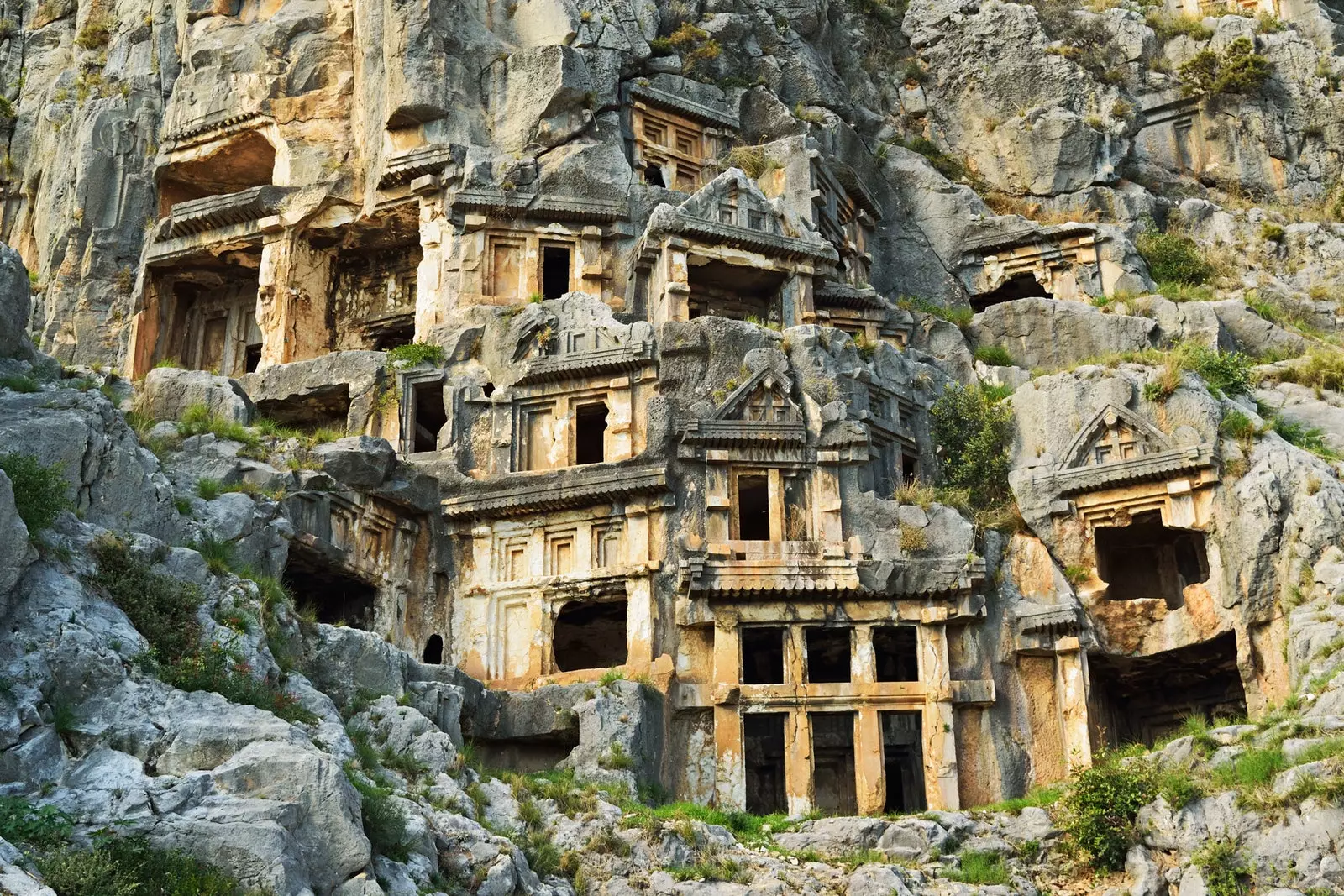
The ruins of Myra, full of rock-cut tombs
More than 2,000 years ago, lycian civilization it occupied a small part of present-day southwestern **Turkey**. Brave fighters, masters of navigation and skillful merchants, the Lycians left an indelible mark, both on the landscape and on the history of the area.
Thanks to the titanic work that the British kate clown developed in the 90s, one of the most beautiful great hiking trails in the world was signposted: the Lycian Route. A tour of 540 km between forests, villages, ancient ruins and tombs, cliffs and the sea. Always the sea, witness to the rise and fall of almost all the great peoples that have ruled the vast world.
After traveling ** the first section of the Lycian Route, between Fethiye and Kalkan, ** the faint salty breeze from the Mediterranean awakens the walker to continue a march that still has great surprises in store for him.
After leaving Kalkan, the path ascends considerably (about 750 meters), to one of the many places on the Lycian Route where time seems to have stopped centuries ago. Is about Berzigan, a farming village that greets the traveler with a row of small wooden barns.
The apples of each harvest are kept there, before being transported to the different markets. The people of Berzigan are friendly and hospitable, always willing to help trekkers who have endured the costly climb.
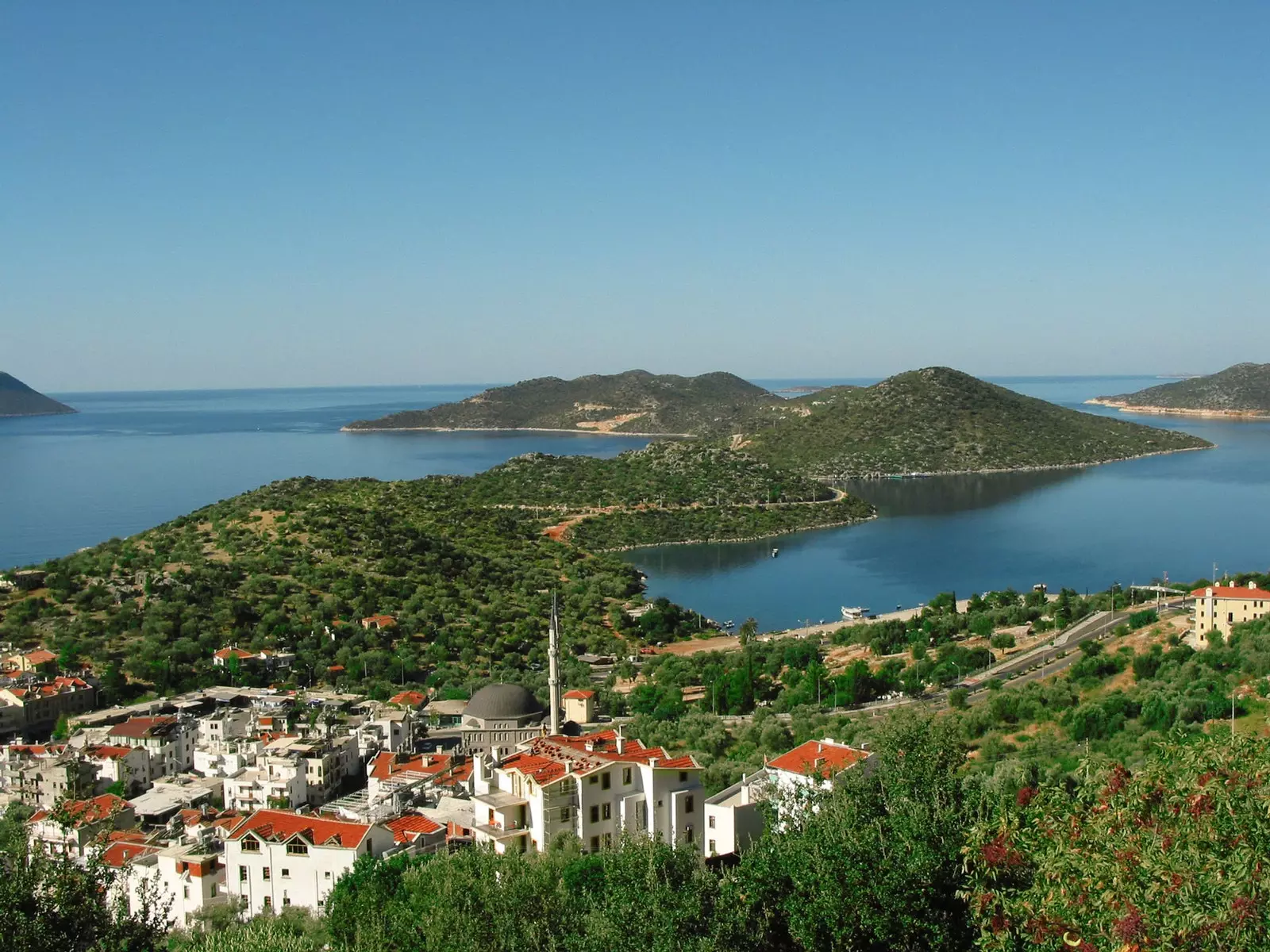
Kalkan, the start of the second leg of the Lycian Route
On the way down to Gökçeören, some wild goats watch the strangers who dare trespass on their possessions. They do not bother them, because they know that they are simple ephemeral adventurers and they will continue to reign after their departure.
After passing Gökçeören, the path continues between pine forests, mountains and small hills covered with berry covered trees. A short detour leads to another of the archaeological gems of the Lycian Route: the ruins of Phellos.
Sandstone sarcophagi and tombs appear here in no apparent order, free from the hand of man. Archaeological works are not even appreciated and one wonders how they are preserved in such good condition after a couple of millennia.
Away from the tombs, and well alive, are the inhabitants of Kaş , a coastal town that has recently woken up to the siren songs of tourism and has become the ideal place to take a few days off on the Lycian Route.
Kaş abounds with pleasure boats that can be rented to go out to cross this beautiful part of the Mediterranean, which offers hidden coves and crystal clear waters that invite relaxation and diving.
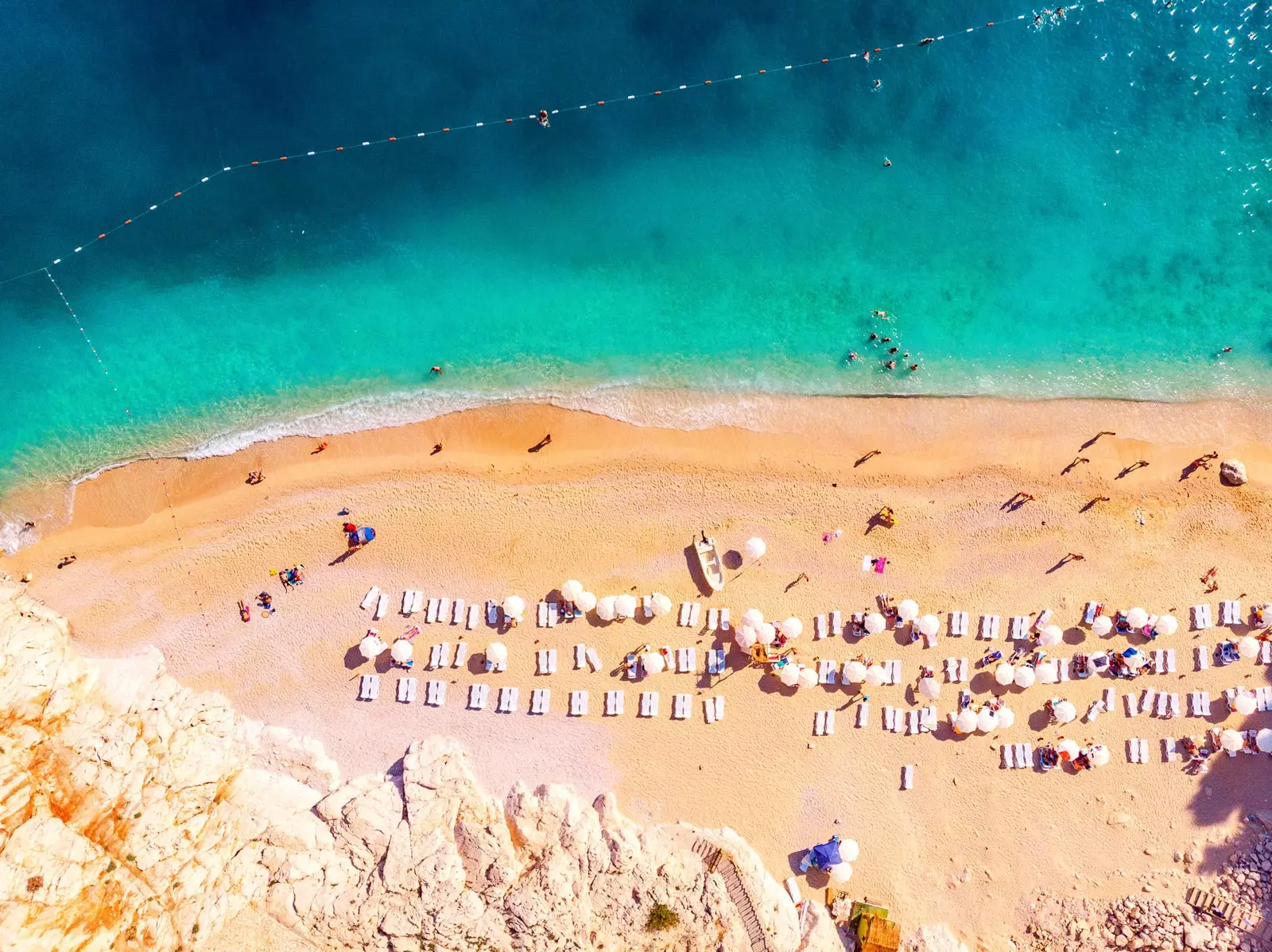
Ka?, the ideal place to take a break
It is also the time to reward the effort of the previous days with a good seafood in one of the best Turkish restaurants in the area. The Ruhi Bey Mehanesi has been serving the best food derived from the suggestive mix of seafood with Turkish ingredients.
The body has catalyzed the sun, rest and good food, transforming everything into a powerful energy that makes it easy face the path again to advance towards Üça z.
The road between both towns is guarded by incredible beaches, such as Üzüm Iskelesi, and the ruins of Aperlae, an ancient city that was destroyed by an earthquake in time immemorial and, even today, appears partially sunken. Houses and tombs drowned on the shore of the sea.
Üça z is a small town perched on a hill, being its castle, Simena, the best viewpoint possible. It is a good place to spend the night or eat something, depending on when you cross the route.
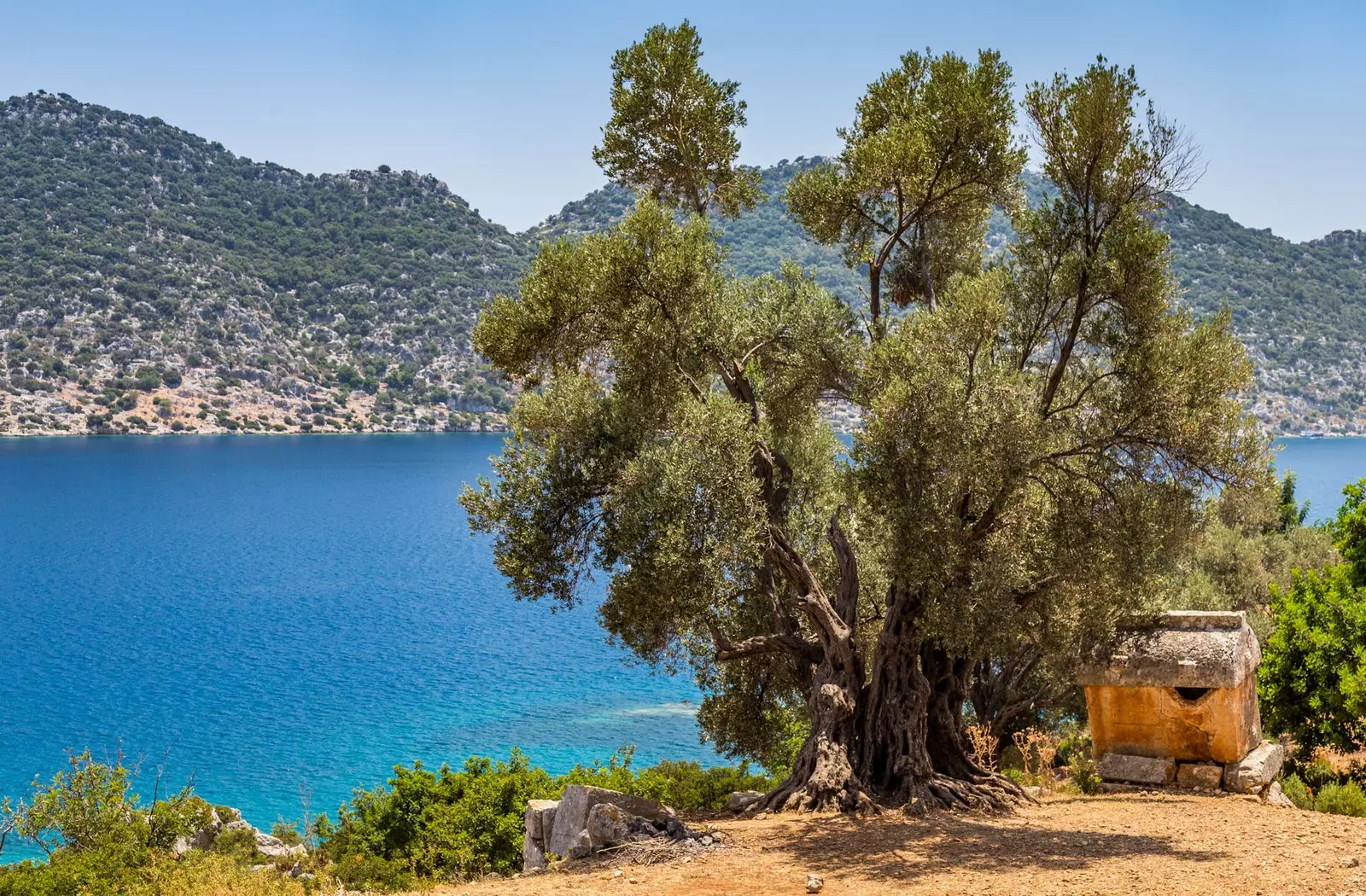
a??z, another wonderful stop along the way
The next stop of interest is Demre , a city in which, due to its proximity to a thriving natural limestone mine, mortuary sarcophagi. That is why there are so many empty tombs around it.
On the outskirts of Demre, there are the ruins of Myra, with an imposing fortress and an amphitheater that today rises between greenhouses and crop fields, making difficult that fascinating mental exercise of trying to imagine what the place would have been like a couple of thousand years ago.
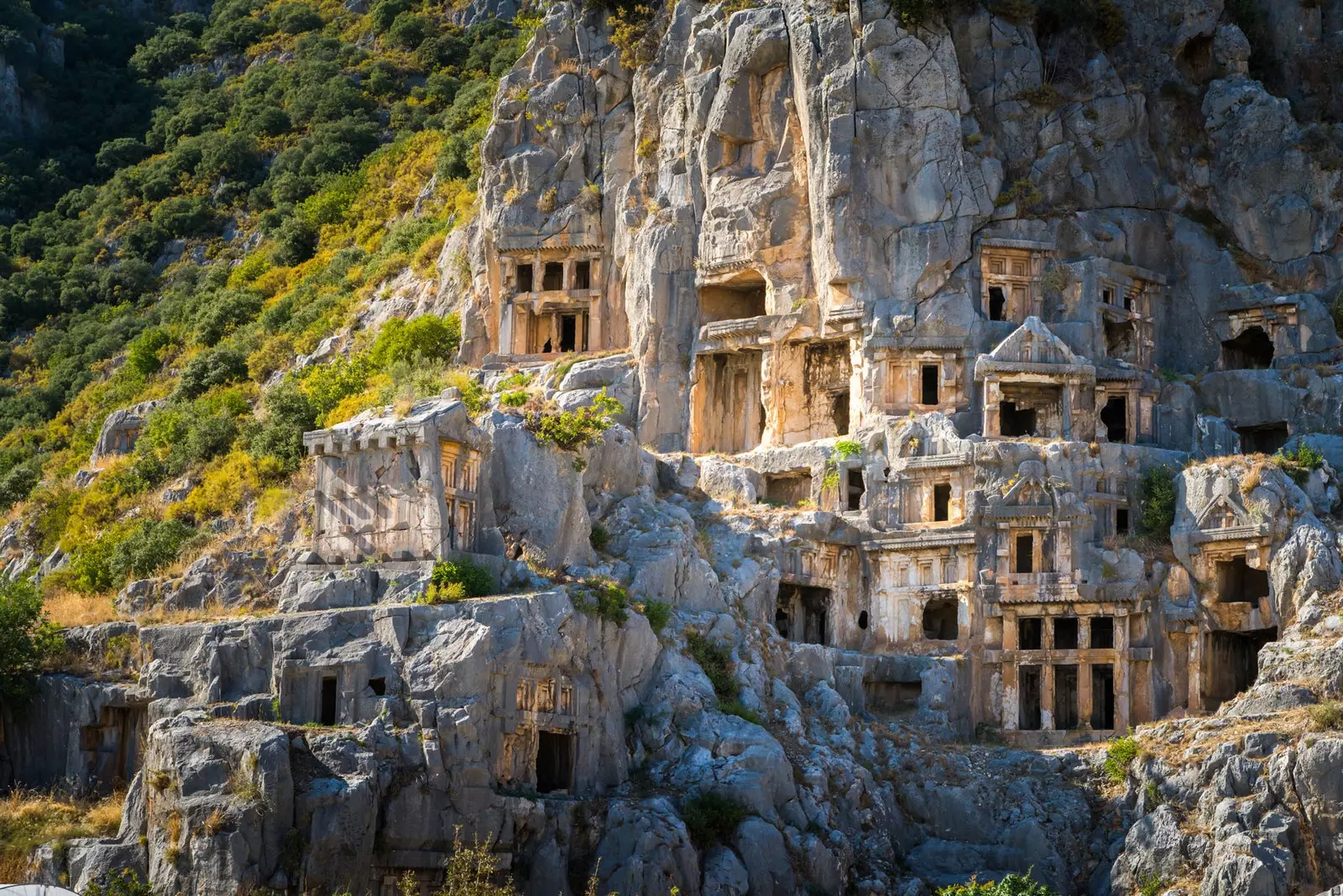
The ruins of Myra, outside Demre
It's time to leave the coast behind and head inland, following a route full of ups and downs that begin to take their toll on legs that try to extract energy from the beautiful landscapes. If so, they will replenish their full strength in the ruins of Alakilisie , a beautiful temple from the 6th century which is also known by the name of Church of the Angel Gabriel.
A couple more days among mountains with slopes covered in Mediterranean forest lead to Finike, after passing through the strange Lycian tombs of Belos. Here begins the last part of the Lycian Route.
The following night offers one of the best camping areas of the entire route: Gelidonya lighthouse. From the heights they can be seen the rocky coves, surrounded by green, through which you pass to reach the promontory that guards the lighthouse. In the distance, pink islands dot the waters of the Mediterranean.
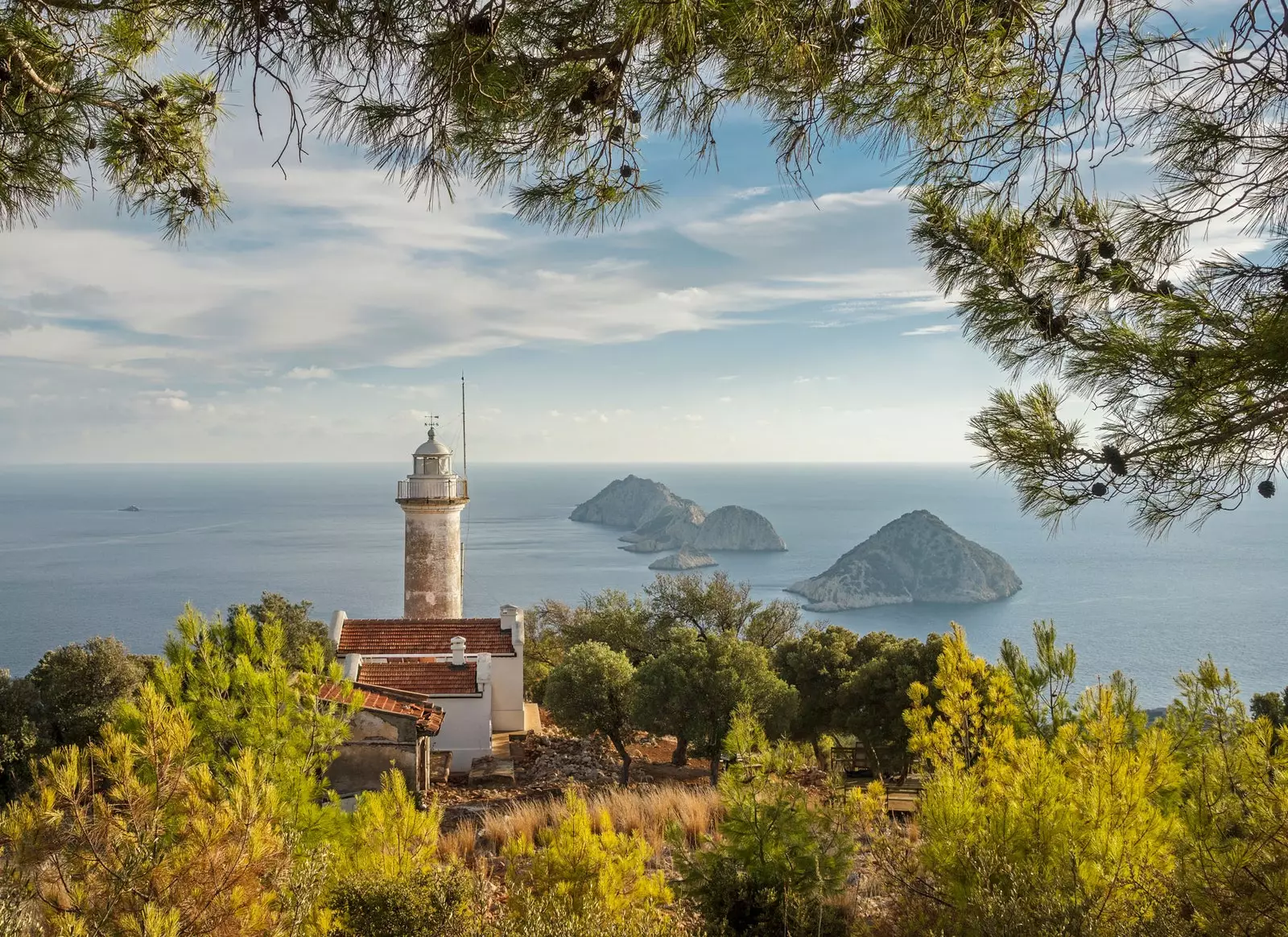
Gelidonya lighthouse, one of the best views on the Lycian Route
Continuing north, the trail runs through Adrasan before ascending to the magnificent ruins of the mythical Mount Olympus. Here you can still admire the remains of the city wall, the necropolis, the baths and a theater.
Although day trips are organized to visit the ruins, the brave who arrive walking by the Lycian Route they access the complex by another path and they are not usually charged for admission.
Fair reward for so much effort. Nearby, at sea level, a fantastic beach is the ideal place to take a bath before resting in the town of Çirali.
Next to Çirali, you can take a short detour to observe a rarity of nature. On Mount Chimera, some flames have been lit, naturally, for millennia. It seems that the culprit of this phenomenon is the methane gas generated by the rocks on which the undying flames settle.
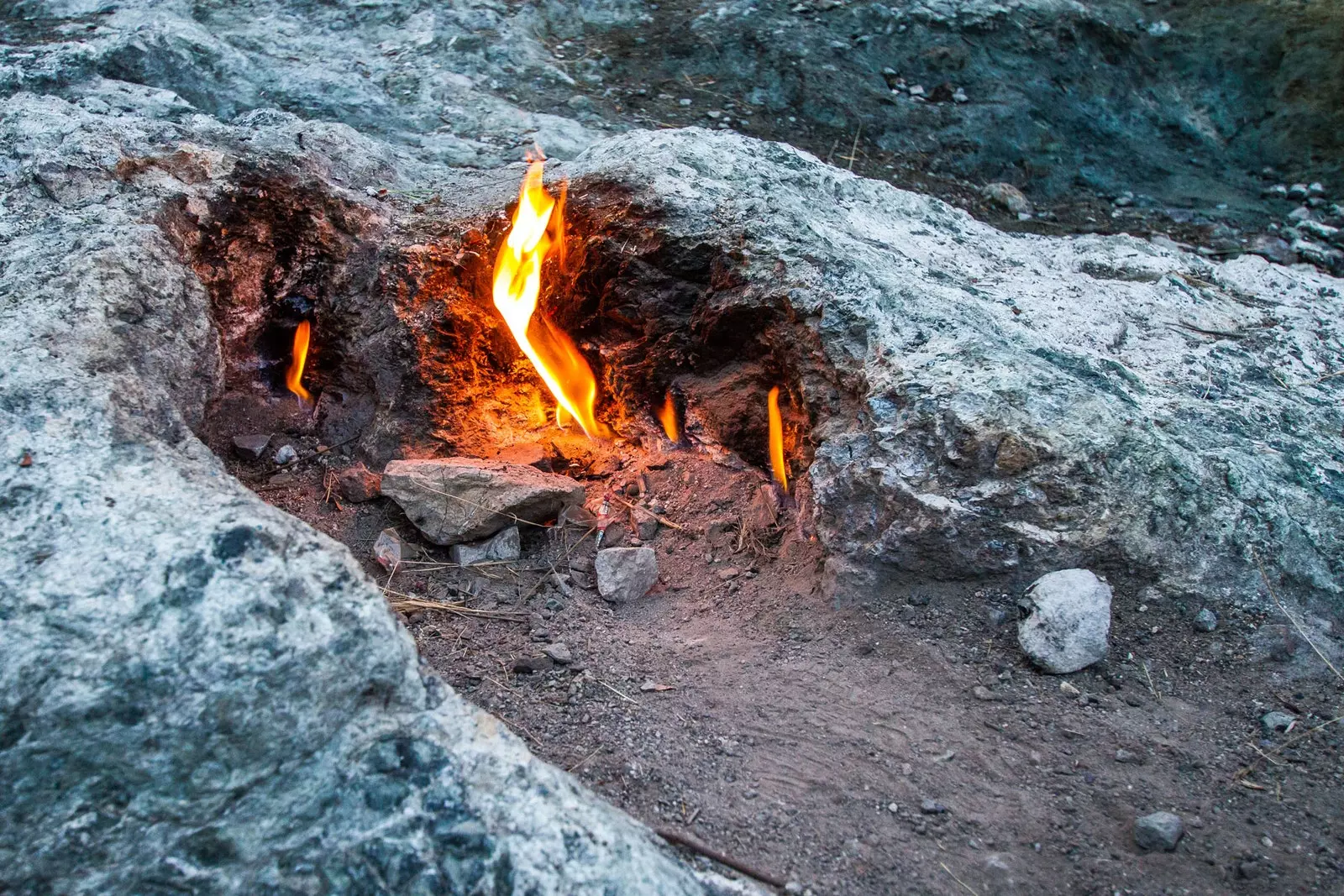
The mysterious flames of Mount Chimera
Further on, near the city of Kemer, the last ruins of the Lycian Route await. The Phaselis ruins are the icing on the cake. The remains of this mighty city, founded by the Rhodians 2,700 years ago, are very well preserved.
strolling between its great stone arches and paved walkways , it is not difficult to transport yourself to the times when Phaselis was an important trade center between Greece, Asia, Phoenicia and Egypt , before being taken from the Lycians by the Persians.
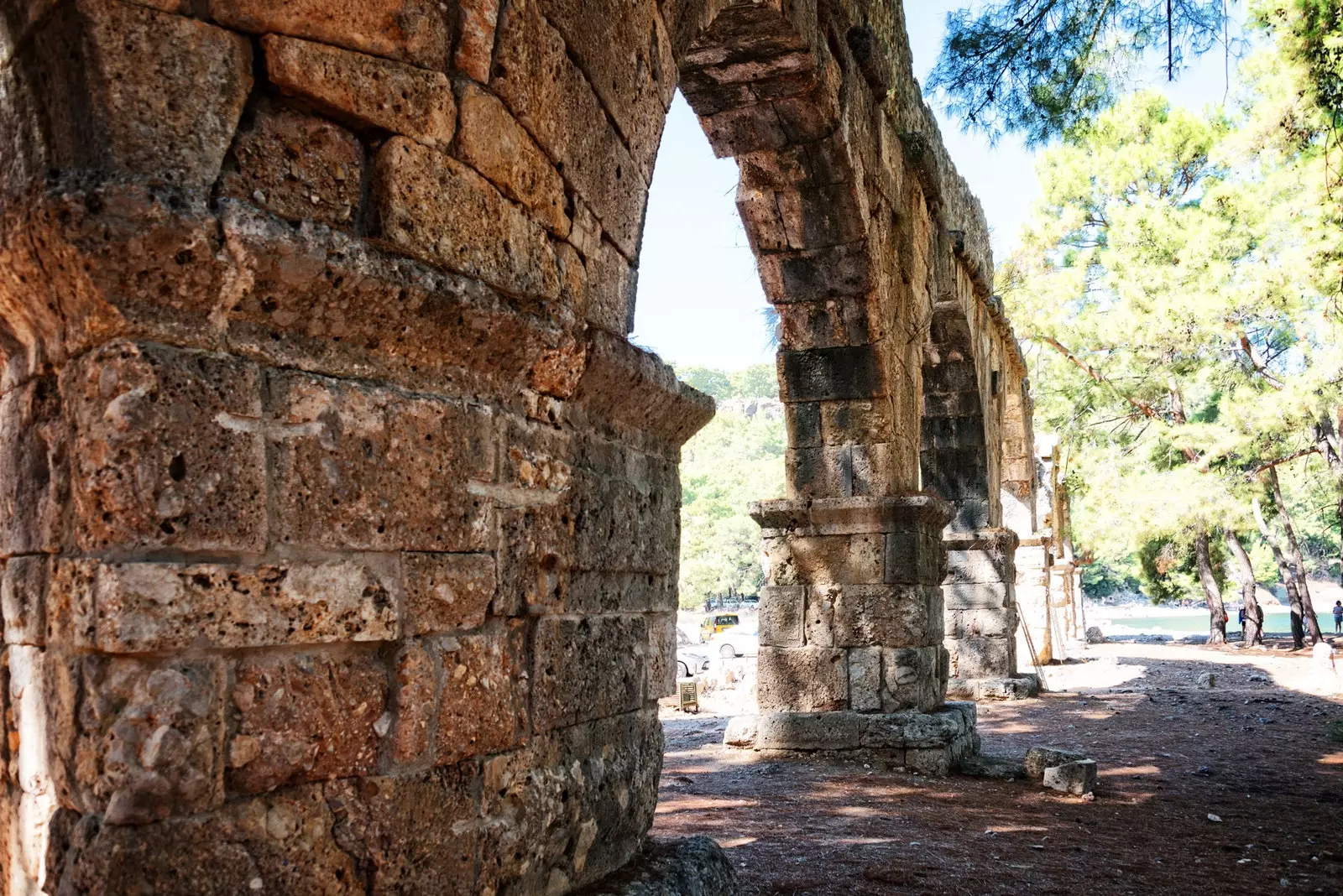
The ruins of Phaselis invaded by Mother Nature
It is the perfect ending to a path in which the weight of History competes with that of nature. Upon boarding the dolmus – a kind of Turkish collective van – heading for Antalya, the traveler's mind is elsewhere. In other world. A world in which the sun rose in a clear and ancestral sky, illuminating a land in which man began to thrive, in his eternal desire to subdue nature.
More than 2,000 years later, only the ruins remain as a legacy of those empires. Mother Nature, patient like few others, always wins.
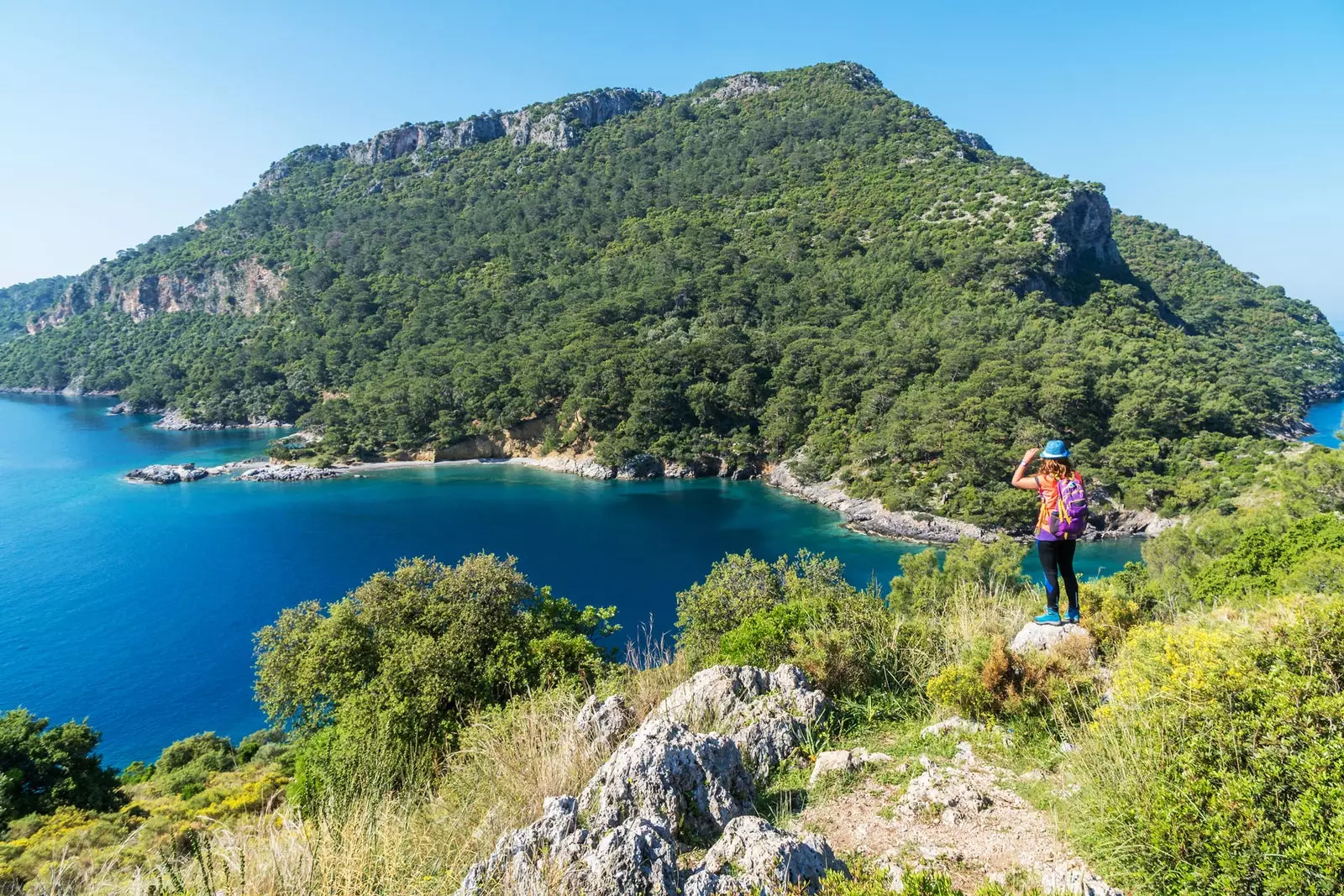
The Lycian Route, one of the most exciting and unknown treks in the world
